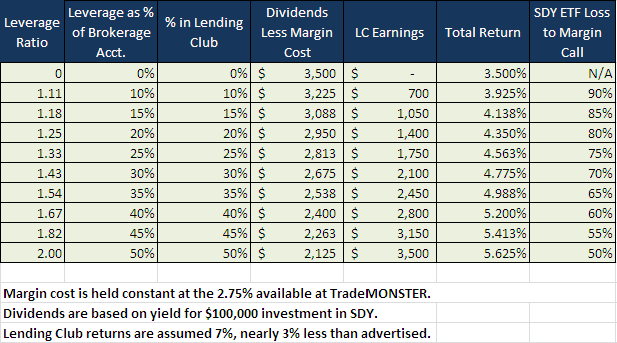Why You Have To Use Leverage To Improve Your Returns
Post on: 16 Март, 2015 No Comment

One of the most interesting academic findings of the past few years has been the sustained underperformance of high beta and over-performance of low beta stocks (most famously in Betting against Beta. Some investment managers have been exploiting this anomaly for decades but the implications of this finding for portfolio construction is still poorly understood by most investors.
How does Betting Against Beta work?
Betting against beta works because the risk and the cost of putting on a position for leverage constrained investors are not the same. As they are not the same, investors are not using their capital optimally. This all sounds very imprecise but an example makes this clear.
Imagine an unleveraged investor choosing between an investment in two stocks.
The first company, we shall call this company A, is a consumer products company. Solidly profitable and debt-free for a number of years it is clearly not going to go out of business any time soon.
The second company, company B, is a highly leveraged chemical company. It is profitable now but margins swing wildly. It has been through bankruptcy a few times and is carrying a high level of debt once again.
What is the risk of each investment? Is risk the same in each case or different? Well, it is obviously different. Company A is less risky than company B simply because I might never get my money back with Company B. The problem is that leverage constrained investors do not treat them as different, they actually treat the risk of these positions as equal. When this happens risk/reward and return are separated.
If we estimate the risk/reward of each investment as 1 and decide to invest 10% of our portfolio in each company we can see this effect*.
Company A might go down 20% at most so our effective risk is actually only 2% of the portfolio. The risk/reward is therefore not actually 1 but 0.2 as we spent 10% to take on this position not 2%. Company B is a far more efficient trade, the downside is 100% so if we have 100% equity in this position we are investing all our capital into this risk.
Implications
Logically, this makes very little sense. Investors end up looking for the most leveraged, most risky stocks. Amongst a group of leverage constrained investors, which is very much the market we are in, this is the natural outcome. Companies take on leverage so investors don’t have to. This is obviously quite a disturbing fact, companies have a range of other stakeholders beyond shareholders. It would make far more sense for companies to use no leverage and for investors to take on debt at the portfolio level but that is probably a topic for another post. Either way, the result is that high-beta stocks are bid to the level from which future returns are low as investors pay up for risk and we see the Betting against Beta effect.
Will the publication of this anomaly change anything? Probably not. The institutional and cultural constraints against leverage are huge and are unlikely to change anytime soon. The irony, of course, is that this probably creates more risk in the aggregate but this finding will probably never surmount widespread suspicion of borrowing.

Conclusions
Two conclusions should be drawn from this finding: low beta stocks are systemically underpriced and investors maximise their returns when using leverage to invest in low-beta stocks. Advocating the use of leverage is obviously an extremely contentious point, the reason why it works of course, so we have to be precise about what this all means.
First, saying that low-beta stocks are underpriced does not mean that they produce higher returns. They don’t, for the leverage constrained investor the only way to effectively use capital is high-beta stocks. The point is that low-beta stocks do produce higher returns for the risk that is being assumed, which should be significantly less than 100% of the purchase price.
Second, I am not merely saying that leverage improves returns. For any given risk, returns are improved by leverage. The point is that using leverage vastly improves the risk/reward trade-off and allows us to actually focus on risk rather than just trying to maximise return at any cost. More importantly though, low-beta stocks are underpriced so we don’t need to use much leverage to get higher returns than risky stocks. The point is not only that we can improve the way we use capital but invest in situations with better risk/reward characteristics. The same return can be made as with a risky stock, just without the risk.
*Yes, it is certainly correct that an investor might put 2% in the risky stock and 10% in the safe stock. Working through an example shows that, depending on risk, portfolios do not have enough equity to exploit safe situations fully i.e. 10% is, in practice, rarely enough equity.
Disclosure: I have no positions in any stocks mentioned, and no plans to initiate any positions within the next 72 hours. I wrote this article myself, and it expresses my own opinions. I am not receiving compensation for it (other than from Seeking Alpha). I have no business relationship with any company whose stock is mentioned in this article.














